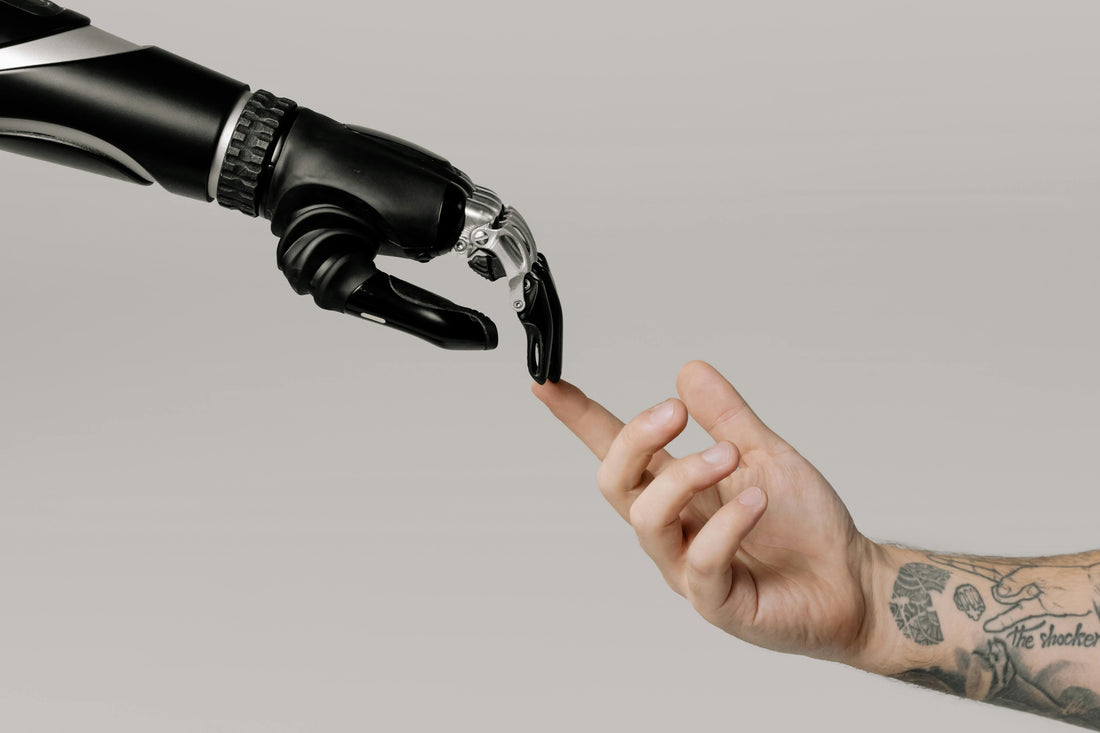Listen to the full conversation with Adam Ortman on the " eCommerce Marketing Podcast" to learn more.
AI is no longer a distant concept. It's here, and it’s not going anywhere.
AI is shaping how businesses engage with their audiences. For marketers, it’s a game-changer—a tool to automate processes, personalize strategies, and amplify results.
But as powerful as this revolutionary technology is, it comes with its fair share of challenges. When misused or misunderstood, the use of AI can backfire, leaving your campaigns feeling cold and disconnected.
Adam Ortman, founder of Kinetic319, sums it up perfectly on the eCommerce Marketing Podcast, saying, “AI is just a new hammer for us.”
Like any tool, its success depends on how it’s used. After all, while a hammer is incredibly useful for driving nails, it’s not going to do much if you’re trying to remove a screw.
Here’s a closer look at the five most common mistakes marketers make when incorporating AI—and how you can avoid them to make sure you’re using your hammer the right way, 100% of the time.
Mistake 1: Treating AI as a Silver Bullet
AI can do a lot, but expecting it to single-handedly fix all your marketing woes? That’s wishful thinking (not to mention a massive mistake). Many marketers fall into the trap of viewing AI as an instant solution, implementing it without a clear strategy or proper human oversight.
The truth is, AI performs best when combined with well-thought-out business strategies. It doesn’t replace the need for creativity or human intuition; rather, it enhances them.
As Adam pointed out in his podcast interview, “The buyer is so much more savvy.” The era of mindless marketing is over. AI can support smart, data-driven decisions, but those decisions still require human judgment.
Whether you’re using AI to automate email sequences or optimize audience targeting, always remember that it’s a tool. It can’t replace the human touch in connecting with a customer’s emotions or understanding nuanced behaviors.
How To Avoid This Mistake: Before implementing AI in any capacity, clearly outline your objectives. Define what success looks like in your campaigns and decide how AI can support those outcomes—not lead them.
Mistake 2: Losing the Human Touch
AI loves efficiency, but when it’s overused, it can strip marketing of its soul. Automation has its fair share of benefits, but relying solely on AI for content creation can risk you losing the emotional connection your audience craves.
Ever come across an ad or email that felt too robotic? That’s the result of poor automation—a glaring mistake that disengages consumers. People connect with brands that show empathy, understanding, and authenticity, and these qualities will always require the human element.
Leveraging AI doesn’t mean turning your brand into a chatbot factory. Yes, AI can generate Instagram captions or blog headlines, but you should still refine those outputs with a human voice to keep your messaging relatable and conversational.
How To Avoid This Mistake: Balance the use of AI with input from your team. After all, consumers don’t just want products; they want connection. Instead of defaulting to pure automation, use AI to enhance your team's creative processes while retaining emotional depth.
Mistake 3: Misunderstanding the Audience
Imagine this—your AI has analyzed mass amounts of consumer data, yet your campaign yields zero results.
Why? Because even with data analysis, understanding your audience means more than feeding raw numbers into an algorithm.
This is a mistake brands often make—they misinterpret the data or fail to apply it meaningfully. “You have four seconds,” Adam warns when talking about how quickly online users decide whether to engage. Misunderstanding your audience’s needs, habits, or preferences leads to messages that miss their mark, no matter how smart the algorithms are behind them.
Your AI tools are only as good as the data you feed them. Improper segmentation or reliance on outdated consumer insights will yield irrelevant targeting, which is the last thing you want in today’s competitive e-commerce space.
How To Avoid This Mistake: Invest in accurate, up-to-date consumer data. Combine AI insights with traditional research methods like surveys or focus groups to deepen your understanding of who your audience is and what they truly want.
Mistake 4: Failing to Adapt and Learn
The world of AI moves fast—blink, and you might miss the latest updates. A static approach to AI can quickly render your tools outdated and your strategies ineffective.
Yet, some marketers fail to adapt, assuming their initial implementation will serve them indefinitely. Spoiler alert—it won’t.
Continuous learning is crucial for staying ahead of AI's rapid developments. “Be curious and play around with it,” Adam advises, emphasizing the importance of exploring how AI evolves. Marketers who don’t keep up with new tools, features, or trends risk falling behind competitors who do.
Whether it’s dedicating time to learning platforms like ChatGPT, attending digital marketing webinars, or working alongside AI consultants, staying informed makes sure your strategies remain relevant and impactful.
How To Avoid This Mistake: Schedule time each month to review advancements in AI tools and evaluate how your team can incorporate them into your marketing workflow. Being proactive keeps your campaigns ahead of the curve.
Mistake 5: Ignoring Ad Fatigue
Ever scroll through social media and see the same ad show up repeatedly? That’s ad fatigue—and it can be a death sentence for your campaigns. One of AI’s biggest strengths is its ability to hyper-target ads, but when marketers fail to refresh campaigns, even the smartest AI efforts fall flat.
Repetition makes your audience tune out. And worse, it often creates a negative association with your brand. However, refreshing ads with varied content can reignite audience engagement and interest. AI tools like dynamic ad platforms are great at automating ad variations; use them to continually tweak visuals and copy to avoid wearing out your audience.
How To Avoid This Mistake: Set regular check-ins for your campaigns. Use AI to track ad performance over time and introduce small adjustments to imagery, tone, or call-to-actions to maintain peak engagement.
The Final Word
AI isn’t a magic wand—it’s a tool every marketer should use with strategy…and with care. When wielded well, and wielded wisely, AI can streamline the sales process, optimize campaigns, and even open doors to creative possibilities you hadn’t imagined.
But make no mistake—it’s still up to you and your team to bring the human element, the emotion, and the connection.
Adam and the Kinetic319 team are helping businesses do just that. Whether you’re new to AI or looking to maximize its potential, Kinetic319 provides expert advice and insight into this evolving space.
Want to know more? Listen to Adam Ortman on the eCommerce Marketing Podcast or book a meeting with Kinetic319 today to start optimizing your strategies.
And whatever you do, steer clear of these common AI pitfalls—your marketing success depends on it.

